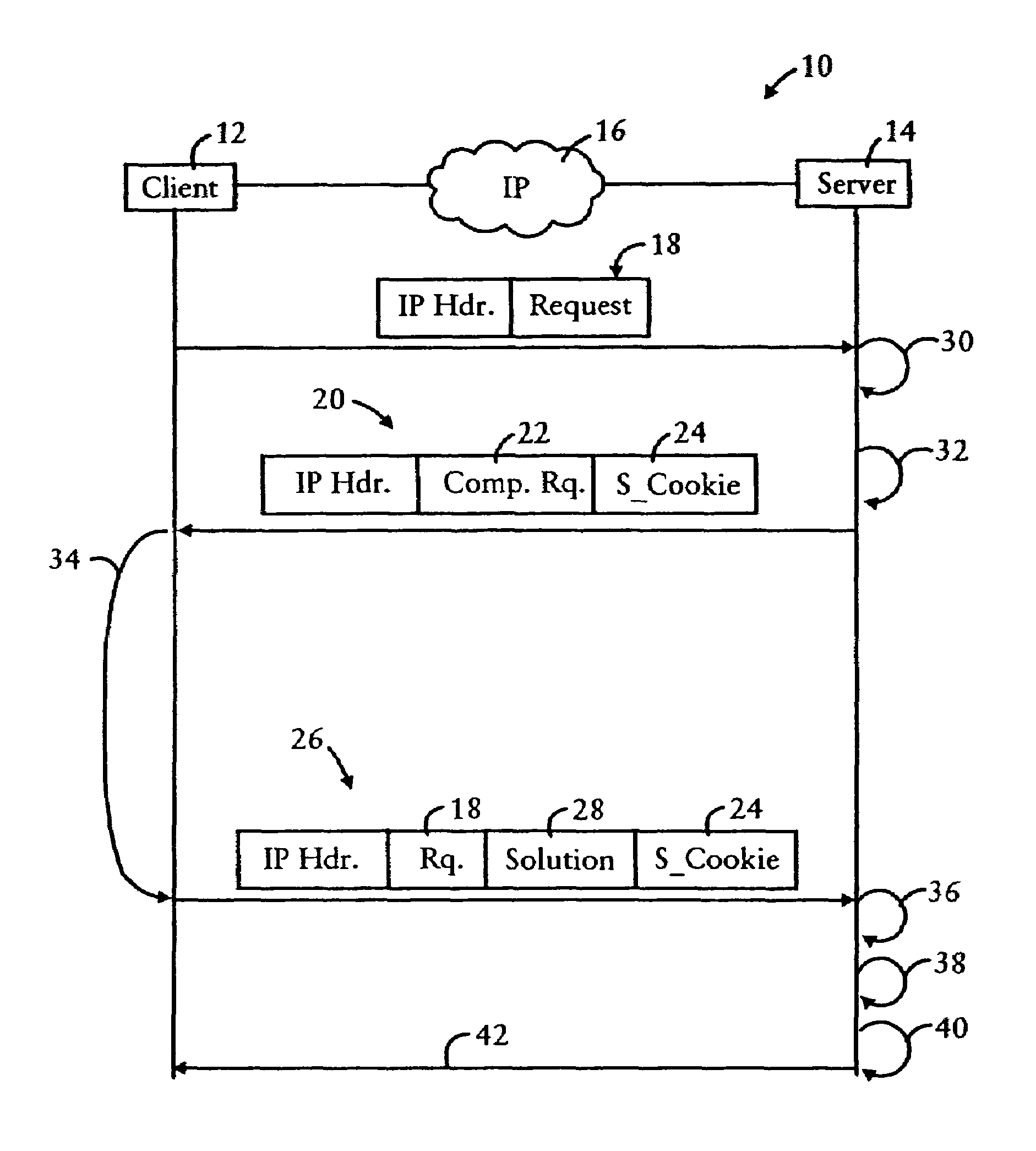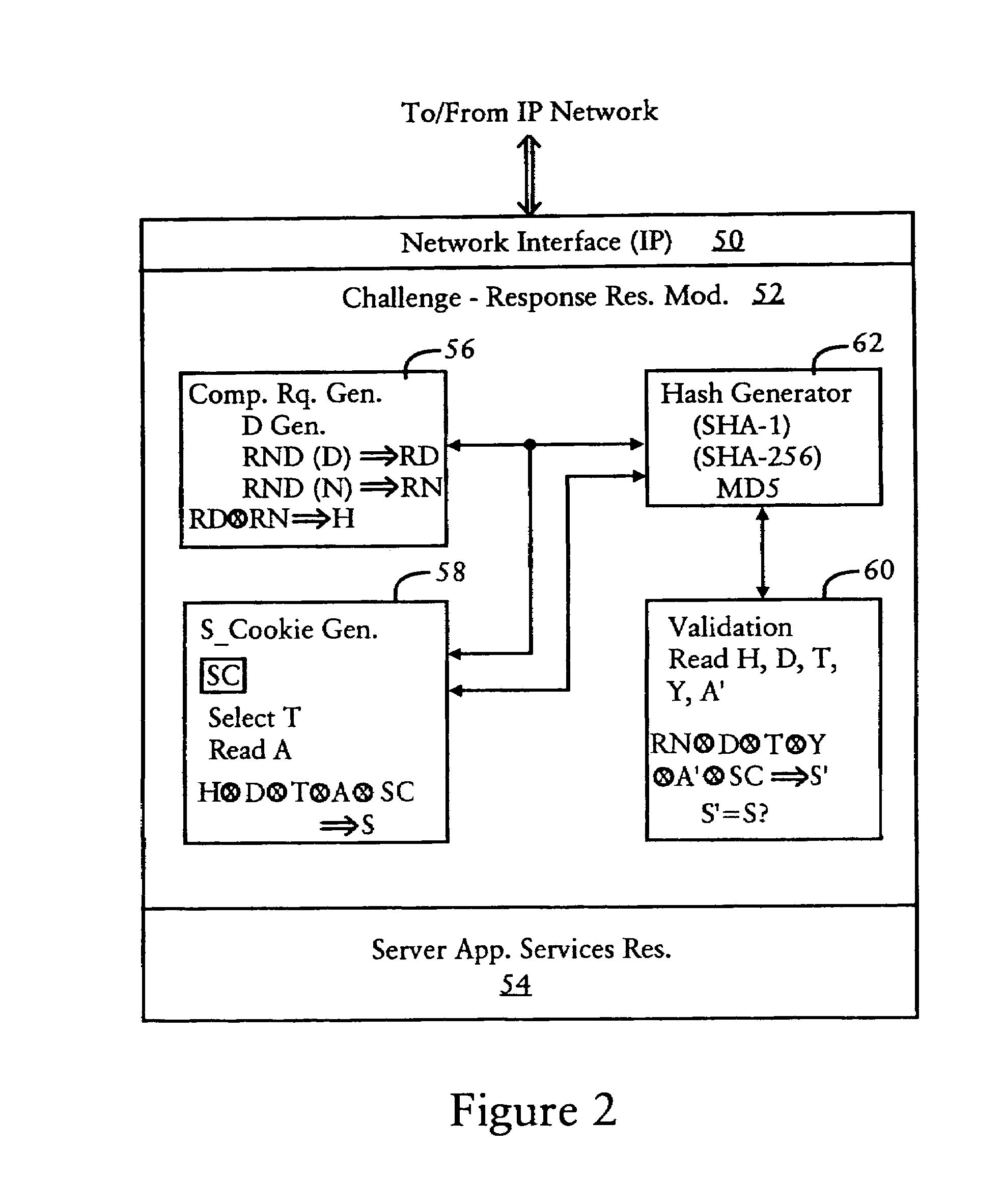Server preventing attacks by generating a challenge having a computational request and a secure cookie for processing by a client
a server and client technology, applied in the field of preventing can solve the problems of end users, network is often subject to denial of service attacks, and major failure points in peer-to-peer systems, and achieve the effect of optimizing the validation of the respons
- Summary
- Abstract
- Description
- Claims
- Application Information
AI Technical Summary
Benefits of technology
Problems solved by technology
Method used
Image
Examples
Embodiment Construction
[0026]FIG. 1 is a diagram illustrating a peer-to-peer network 10 including a first peer node 12, referred to as the client, and a second peer node 14, referred to as the server. The client 12 and the server 14 are configured for exchanging messages via a network 16, for example an Internet protocol network.
[0027]In particular, the typical client-server transaction involves the client 12 sending a request 18 to the server 14 via the network 16. The request 18 includes a source address field that specifies the IP address of the client 12, a destination IP address that specifies the IP address of the server 14, higher level protocol identifiers such as TCP or UDP source and destination ports, and a request for some operation (i.e., work) to be performed that necessitates the expenditure of resources by the server 14.
[0028]As described above, concerns arise that the client 12 may be a malicious source that sends the request 18 in order to waste resources on the server 14, for example in...
PUM
 Login to View More
Login to View More Abstract
Description
Claims
Application Information
 Login to View More
Login to View More - R&D
- Intellectual Property
- Life Sciences
- Materials
- Tech Scout
- Unparalleled Data Quality
- Higher Quality Content
- 60% Fewer Hallucinations
Browse by: Latest US Patents, China's latest patents, Technical Efficacy Thesaurus, Application Domain, Technology Topic, Popular Technical Reports.
© 2025 PatSnap. All rights reserved.Legal|Privacy policy|Modern Slavery Act Transparency Statement|Sitemap|About US| Contact US: help@patsnap.com



